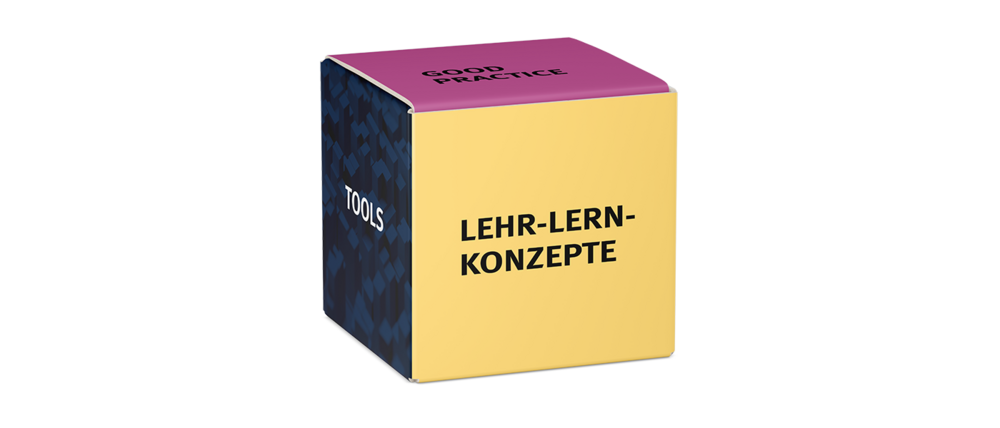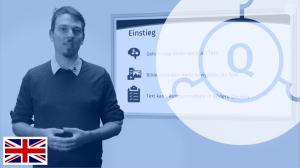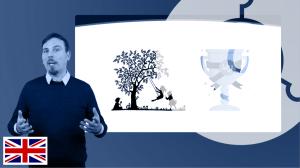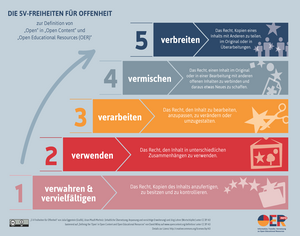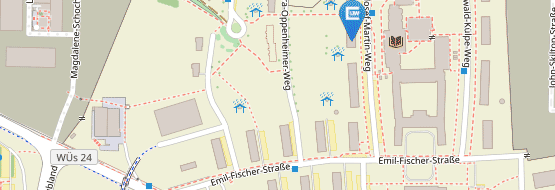Open Educational Resources
According to UNESCO, Open Educational Resources (OER) are free teaching, learning and research materials that are openly licensed and accessible free of charge and can be used, adapted and redistributed for teaching and learning purposes.
OER thus support individual learning and enable teachers to adapt materials to their needs. At the same time, OER strengthen (global) educational equity and connect learners and teachers worldwide. Students and lecturers can use the materials for their own teaching and learning contexts, regardless of location and financial resources.
Depending on the licence, the materials can be shared and edited by third parties, thereby promoting innovation and quality in teaching. Authors of OER materials also gain visibility in the academic community.
The CTL has developed materials and experiences for teachers, students and university didactics experts in various projects. With the toolbox , we provide you with an in-house solution through which you can share materials, teaching concepts and experiences with others at the univeristy in a protected and systematic framework.
Even if not all content is OER in the strict sense, we would still like to make it accessible due to its practicality and added value for teaching and learning.
Enjoy discovering and participating!
Toolbox for digital teaching (in-house access)
The central participatory platform for a variety of methods, resources, guidelines, and tips for promoting digital university teaching! Here, teachers, students, and educators at JMU can share their experiences from teaching practice:
Whether established methods, tried-and-tested concepts, or favorite tools, the Toolbox offers space for everyone to exchange ideas and content related to digital teaching and find inspiration.
Scenarios for the use of e-portfolios in digital teaching - Mahara
Templates and examples of possible scenarios for the use of e-portfolios in teaching and for independent documentation of individual development.
The materials provide an easy introduction to working with e-portfolios and are aimed at both students and teachers.
-in German only-
Blended learning seminars - OER for the further training of teachers
These teaching materials are aimed at university lecturers who would like to offer further training on various topics relating to digital and hybrid teaching.
They were created as part of the QUADIS joint project "Improving the quality of digitally supported teaching at Bavarian universities". QUADIS ran from 1 August 2021 to 31 July 2024 and was funded by Stiftung Innovation in der Hochschullehre.
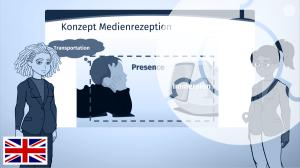
Social Presence and Distraction in Online Learning Environments
Dr Thorsten Aichele (2023)
DOI-Nummer: 10.71641/quadis-1036
The concept of OER represents an innovative form of creating and sharing educational materials. Both users and creators of OER benefit from it in many ways:
- OER make a significant contribution to free access to education through their free accessibility and thus promote (worldwide) equal opportunities.
- The revision and reuse of OER by others promotes innovation and contributes to increasing the quality of teaching, as materials can be continuously adapted, improved and adapted to different learning needs.
- Creators increase their visibility and reputation in their subject area by disseminating their own materials.
- OER promote a culture of sharing and collaboration.
OER materials must allow subsequent users certain freedoms in order to be considered as such. The most common categorisation is the 5 V freedoms according to David Wiley, which was translated into German by Jöran Muuß-Merholz:
Source: „5 V-Freiheiten für Offenheit“ von Julia Eggestein (Grafik), Joeran Muuß-Merholz (inhaltliche Übersetzung, Anpassung und vorsichtige Erweiterung) und Jörg Lohrer (Wortschöpfer) under CC BY 4.0 based on „Defining the ‘Open’ in Open Content and Open Educational Resources“ von David Wiley.
An open or free licence does not mean that the materials provided are in the public domain and that one's own copyrights are surrendered. Rather, it is common practice in the context of OER to provide the materials created with Creative Commons (CC) licences. CC licences are standardised licence agreements that enable authors to easily share their works with the public. The different licence models set out different terms of use while reserving certain rights. Overall, they promote open and creative collaboration.
The conditions of re-use vary between the different CC licence models. The basic rule for all CC licences is that the licensor cannot revoke the freedoms granted by the licence as long as the re-users comply with the licence conditions.
| The licence promises... | under the condition... | with the abbreviation... | |
|---|---|---|---|
| Attribution 4.0 International |
|
| CC BY |
| Attribution-ShareAlike 4.0 International |
|
| CC BY-SA |
| Attribution-NonCommercial 4.0 International |
|
| CC BY-NC |
| Attribution-NonCommercial-ShareAlike 4.0 International |
|
| CC BY-NC-SA |
| Attribution-NoDerivatives 4.0 International |
|
| CC BY-ND |
| Attribution-NonCommercial-NoDerivatives 4.0 International |
|
| CC BY-NC-ND |
The possible licence models allow different aspects of subsequent use or restrict them. When using CC-licensed material, it is therefore essential to observe the specific CC licence granted.
In order for the licence agreement to be effective, CC-licensed materials used must be correctly labelled. The required information can be easily remembered using the "TULLU" rule (GERMAN):
- Title: What is the name of the material?
- Auther (Urheber:in): Who created the material?
- Licence: Under which licence has it been published?
- Link to the licence: Where can the licence text be found?
- Place of origin (Urspungsort): Where can the material be found?
There are a large number of OER platforms, such as
- OERSI is a search engine for free educational materials in university teaching
- OER repository of the virtual university of applied sciences bayern
- Open educational materials on twillo
- oer-commons.
Materials can be found and/or uploaded here for re-use.
Depending on the platform, however, an (author) account is required to share materials. The ZBL can take over the publication of your materials via the vhb. Please contact zbl@uni-wuerzburg.de for this.
ORCA.nrw provides interesting insights specifically on the topics of OER and artificial intelligence: Topics OER & AI | ORCA.nrw
The CTL toolbox can also be used as a platform for sharing materials, teaching/learning concepts and experiences in a protected and systematic framework, in the broader sense of OER.


![Logo [denk]anstoß with "Artificial Intelligence - key topic 2025"](/fileadmin/_processed_/5/4/csm_denkanstoss_Header-ENG_357f6a5b4f.png)
